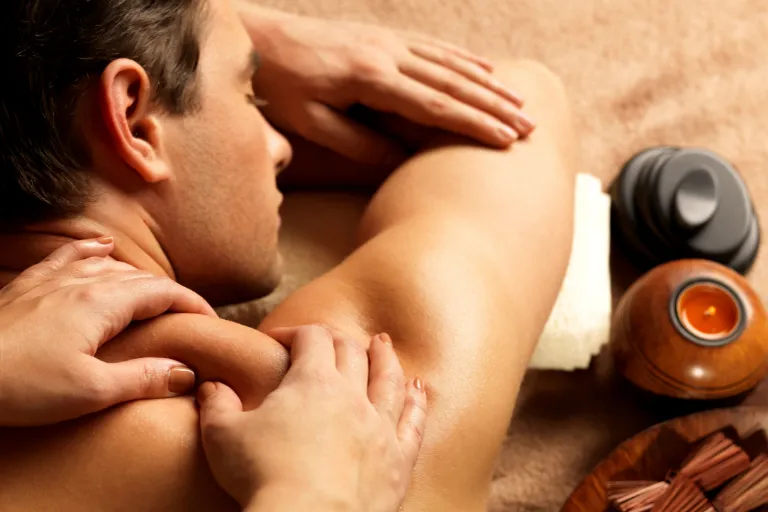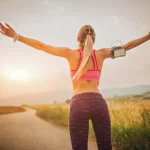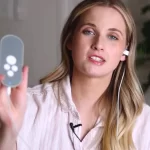Key Points:
- Ancient practice, modern science – From Traditional Chinese Medicine to sports rehab, scraping therapy is used to promote healing and mobility.
- How it works – Uses smooth-edged tools to loosen fascia, boost circulation, and reduce pain sensitivity.
- Research-backed benefits – Studies show scraping can reduce chronic neck pain [4], improve range of motion [5], and speed muscle recovery [7].
- Tool variety – Jade, stainless steel, resin, ceramic, and electric scraping devices target different needs.
- Technique essentials – Hold the tool at 30–45°, use oil or balm, and stroke in one direction for 2–10 minutes.
- Applications – Muscle recovery, joint stiffness, menstrual cramps, and facial lymphatic drainage.
- Safety – Avoid if you have skin infections, varicose veins, bleeding disorders, or recent injuries.
- DIY vs professional – Light scraping is safe at home; deeper applications should be done by trained practitioners.
- Comparison advantage – More targeted than foam rolling, more portable than massage therapy.
- Best approach – Start gently, monitor your skin, and gradually increase intensity.
In gyms, rehab clinics, and even beauty salons, people are gliding smooth-edged tools across their skin in search of relief. This is scraping therapy—a practice as old as it is modern, known in different contexts as Gua Sha, Instrument-Assisted Soft Tissue Mobilization (IASTM), and the Graston Technique®.
Once reserved for traditional healers or elite athletes, scraping is now part of mainstream wellness culture, backed by both centuries-old tradition and a growing body of research.
Why Scraping Therapy Matters
Our daily lives often conspire against healthy movement—hours of sitting, repetitive motions, and limited mobility. Over time, muscle tension builds, fascia tightens, and small aches become constant companions. Many people are looking for solutions that are non-invasive, drug-free, and effective.
Scraping therapy offers exactly that. With the right technique, it can reduce discomfort, improve movement, and speed up recovery from exercise or injury. The method’s accessibility—ranging from at-home facial Gua Sha to clinical sports rehab—makes it a versatile tool in the wellness toolbox.
Ancient Roots, Modern Science
The origins of scraping therapy trace back more than 2,000 years to Traditional Chinese Medicine (TCM), where Gua Sha was used to “release stagnant qi” and treat ailments from fever to muscle pain. Similar practices appear in Southeast Asian folk medicine, often involving coins, ceramic spoons, or animal bone tools.
In the late 20th century, physical therapists adapted the principle into IASTM and branded approaches like the Graston Technique®, using stainless steel tools and grounding the practice in biomechanics and tissue healing science [1].
While TCM focuses on balancing the body’s energy, modern sports medicine views scraping through the lens of fascia release, microcirculation, and neuromuscular response.
How Scraping Works
At its core, scraping therapy uses a smooth-edged tool to stroke the skin with controlled pressure. This produces several measurable effects:
- Fascia release – Loosens “stuck” connective tissue that can limit movement.
- Microcirculation boost – Increases local blood flow; Gua Sha has been shown to improve surface microperfusion by up to 400% after one session [2].
- Inflammatory modulation – Creates a mild, controlled inflammatory response that may promote healing [3].
- Pain desensitization – Stimulates sensory nerve endings, potentially reducing pain perception [4].
In a randomized controlled trial, participants with chronic neck pain experienced significant pain reduction and improved mobility for up to a week after Gua Sha [4]. Similar benefits have been reported for plantar fasciitis, back tension, and post-exercise muscle soreness [5][7].
Tools of the Trade
Scraping tools vary by tradition, purpose, and setting:
| Material | Example Uses |
|---|---|
| Jade/Bian stone | Facial and traditional Gua Sha |
| Stainless steel | IASTM, Graston for deep tissue work |
| Plastic resin | Lightweight, beginner-friendly tools |
| Ceramic spoons | Southeast Asian folk scraping |
| Electric devices | Combine scraping with vibration/heat |
Shape matters: curved edges suit large muscle groups, pointed ends target small trigger points, and wide blades cover broad areas like the back.
How It’s Done
Preparation: The skin is cleaned, then coated with oil or balm to reduce friction.
Angle & Stroke: The tool is held at 30–45°, stroked in one direction along the muscle fibers.
Pressure: Light for lymphatic or facial work; firmer for deep muscle adhesions.
Duration: 2–10 minutes per area is typical.
A case study in the Journal of Bodywork and Movement Therapies found that a four-week IASTM program, combined with stretching, significantly reduced pain in a runner with plantar fasciitis [6].
Benefits of Scraping Therapy
Scraping is used for a wide range of wellness and rehab goals:
- Muscle recovery: Reduces delayed onset muscle soreness (DOMS) after workouts [7].
- Joint mobility: Helpful for stiff shoulders, wrists, or knees [5].
- Menstrual discomfort: TCM protocols apply scraping to the lower back and abdomen to relieve cramps [8].
- Post-viral fatigue: Anecdotally reported to reduce lingering muscle heaviness.
- Facial rejuvenation: Light Gua Sha helps drain lymphatic fluid and reduce puffiness.
Risks and Safety
Most users experience only mild side effects like redness or temporary tenderness. However, scraping is not recommended for those with:
- Active skin infections or wounds
- Varicose veins
- Bleeding disorders or on blood thinners
- Recent fractures or surgeries
A systematic review found no serious adverse events in most clinical studies to date [9], but proper technique and tool hygiene are essential.
DIY or Professional?
DIY-friendly: Facial Gua Sha, light body scraping for general wellness.
Professional recommended: Chronic pain, sports injuries, or postural issues—especially when deeper pressure is needed.
Qualified providers may hold certifications from the Graston Technique®, RockTape Blades, or TCM licensure.
How It Compares to Other Therapies
| Method | Best For | Pros | Cons |
|---|---|---|---|
| Scraping | Fascia release, deep adhesions | Targeted, versatile | May bruise or cause soreness |
| Cupping | Circulation, detox | Stimulates lymph flow | Circular marks, less precise |
| Foam rolling | Self-myofascial release | Affordable, simple | Limited precision |
| Massage | General tension relief | Relaxing, holistic | Cost, time |
| Dry needling | Trigger point release | Effective for nerve pain | Invasive, requires licensure |
Key Takeaway
Scraping therapy bridges ancient tradition and modern rehab science, offering measurable benefits for recovery, mobility, and pain relief. Whether you’re easing post-workout soreness or seeking deeper tissue release, the key is starting gently, using proper technique, and knowing when to consult a professional.
Quick tip: Start with short, light sessions and gradually increase pressure. Always listen to your body.
The article does not in any way constitute as medical advice. Please seek consultation with a licensed medical professional before starting any treatment. This website may receive commissions from the links or products mentioned in this article.
Subscribe for Free for more insightful health articles tailored to your needs.
References
- Physiopedia. Instrument Assisted Soft Tissue Mobilization (IASTM). https://www.physio-pedia.com/Instrument_Assisted_Soft_Tissue_Mobilization
- Lauche R. et al. (2012). Effect of Gua Sha on local circulation and pain. J Altern Complement Med. https://pubmed.ncbi.nlm.nih.gov/23033271/
- Hammer WI. (2008). The effect of IASTM on healing tissue. J Bodyw Mov Ther. https://www.ncbi.nlm.nih.gov/pmc/articles/PMC3088402/
- Braun M. et al. (2011). Effectiveness of Gua Sha on chronic neck pain. Pain Med. https://pubmed.ncbi.nlm.nih.gov/21426354/
- Cheatham SW et al. (2016). IASTM improves flexibility and reduces pain. Int J Sports Phys Ther. https://pubmed.ncbi.nlm.nih.gov/27385222/
- Kivlan BR et al. (2022). IASTM in plantar fasciitis recovery. J Bodyw Mov Ther. https://www.sciencedirect.com/science/article/abs/pii/S1360859221001167
- Cheatham SW. (2016). The effectiveness of scraping tools in post-exercise recovery. https://pubmed.ncbi.nlm.nih.gov/27385222/
- Zhou W. et al. (2010). Gua Sha and menstrual pain reduction. Chin J Integr Med. https://pubmed.ncbi.nlm.nih.gov/20066533/
- Nielsen A. et al. (2012). Adverse events of Gua Sha: A systematic review. J Altern Complement Med. https://pubmed.ncbi.nlm.nih.gov/22268979/
- Braun, M., Schwickert, M., Nielsen, A., Brunnhuber, S., Dobos, G., Musial, F., Lüdtke, R., & Michalsen, A. (2011). Effectiveness of traditional Chinese “gua sha” therapy in patients with chronic neck pain: a randomized controlled trial. Pain Medicine, 12(3), 362–369. https://doi.org/10.1111/j.1526-4637.2011.01053.x
- Chen, T., Liu, N., Liu, J., Zhang, Y., Huang, Z., Zhang, J., Chen, J., Dong, L., & Ding, Z. (2016). Gua Sha, a press-stroke treatment of the skin, boosts the immune response to intradermal vaccination. PeerJ, 4, e2451. https://doi.org/10.7717/peerj.2451
- Hamp, A., Anderson, J., Laughter, M. R., Anderson, J. B., Presley, C. L., Rundle, C. W., & Dellavalle, R. P. (2023). Gua-sha, jade roller, and facial massage: Are there benefits within reach of your fingertips? Journal of Cosmetic Dermatology, 22(2), 700–703. https://doi.org/10.1111/jocd.15421
- Kwong, K. K., Kloetzer, L., Wong, K. K., Ren, J.-Q., Kuo, B. J., Jiang, Y., Chen, Y. I., Chan, S.-T. C., Young, G. S., & Wong, S. T. C. (2009). Bioluminescence imaging of heme oxygenase-1 upregulation in the Gua Sha procedure. Journal of Visualized Experiments, (30), 1385. https://doi.org/10.3791/1385
- Qi, F., Cai, Y., Chen, J. J., Chen, C. L., Han, X. E., Xia, Q., & Kapranov, P. (2023). Traditional Chinese medicine treatment, gua sha, can induce subtle molecular changes in gene expression. Biomedical and Environmental Sciences, 36(5), 441–451. https://doi.org/10.3967/bes2023.053
- Lee, M. S., Choi, T. Y., Kim, J. I., & Choi, S. M. (2010). Using guasha to treat musculoskeletal pain: A systematic review of controlled clinical trials. Chinese Medicine, 5(1), 5. https://doi.org/10.1186/1749-8546-5-5
- Hammer, W. I., & Pfefer, M. T. (2008). Therapeutic effectiveness of instrument-assisted soft-tissue mobilization in the treatment of mechanical low back pain. Journal of Bodywork and Movement Therapies, 12(3), 246–256. https://doi.org/10.1016/j.jbmt.2008.03.007




